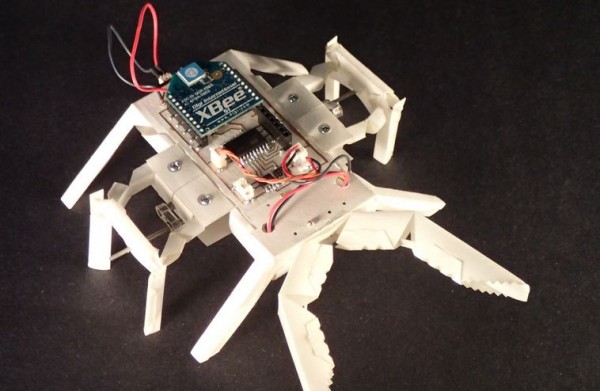"Origami Robot" Transforms Itself Without Human Intervention
| Kizha T. Trovillas | | Aug 08, 2014 01:55 AM EDT |
(Photo : MIT) Origami robot from MIT
An incredible functioning "transformer robot" made from a little more than a sheet of paper and plastic scraps has been crafted by researchers from MIT and Harvard University.
Using the Japanese paper-folding art origami, a team of engineers and researchers created the first robot that can fold itself into arbitrary shapes without any intervention from a human operator.
Like Us on Facebook
As soon as batteries are attached to it, a seemingly flat sheet of paper transforms into a complex machine with four legs and starts crawling away in a span of just four minutes.
The exciting thing about the device is when it thoughtfully rises from the ground and transforms into a three dimensional object, said by Professor Daniela Rus of the MIT Electrical Engineering and Computer Science Division.
It's been noted before that paper folding has interesting mechanical properties.
The paper used to make the robot was embedded with computer software programmed to create folding patterns that can turn into basically any design.
Layers of a different type of plastic that shrink when heated were also used in the design. Researchers inserted microprocessors into those parts of the plastic they intended as joints to allow the robot to bend as it reconfigures.
When the plastic absorbs heat from the circuit, the robot is pulled into its final shape. Powered by a battery and motor, the robot then starts to crawl away.
Interestingly, this new robotic technology cost only US$100.
The latest milestone was reported in the August 7 issue of the online journal Science.
The scientific paper was authored by Rus, another MIT colleague and three other researchers at Harvard's Institute of Biologically Inspired Engineering and School of Engineering and Applied Sciences.
The technology could have a major influence on manufacturing processes since it could rapidly speed-up production that requires time-consuming manual configuration.
Rus said their big dream is to make the fabrication of these robots fast and cheap.
Meanwhile, researchers are expected to unveil another experimental origami machine, the 5 millimeter self-folding cube, in an automation convention in Taiwan next week.
TagsDaniela Rus, Harvard's Institute of Biologically Inspired Engineering and School of Engineering and Applied Sciences, MIT Electrical Engineering and Computer Science Division, Origami, Paper robots
©2015 Chinatopix All rights reserved. Do not reproduce without permission
EDITOR'S PICKS
-

Did the Trump administration just announce plans for a trade war with ‘hostile’ China and Russia?
-

US Senate passes Taiwan travel bill slammed by China
-

As Yan Sihong’s family grieves, here are other Chinese students who went missing abroad. Some have never been found
-

Beijing blasts Western critics who ‘smear China’ with the term sharp power
-

China Envoy Seeks to Defuse Tensions With U.S. as a Trade War Brews
-

Singapore's Deputy PM Provides Bitcoin Vote of Confidence Amid China's Blanket Bans
-

China warns investors over risks in overseas virtual currency trading
-

Chinese government most trustworthy: survey
-

Kashima Antlers On Course For Back-To-Back Titles
MOST POPULAR
LATEST NEWS
Zhou Yongkang: China's Former Security Chief Sentenced to Life in Prison

China's former Chief of the Ministry of Public Security, Zhou Yongkang, has been given a life sentence after he was found guilty of abusing his office, bribery and deliberately ... Full Article
TRENDING STORY

China Pork Prices Expected to Stabilize As The Supplies Recover

Elephone P9000 Smartphone is now on Sale on Amazon India

There's a Big Chance Cliffhangers Won't Still Be Resolved When Grey's Anatomy Season 13 Returns

Supreme Court Ruled on Samsung vs Apple Dispute for Patent Infringement

Microsoft Surface Pro 5 Rumors and Release Date: What is the Latest?










